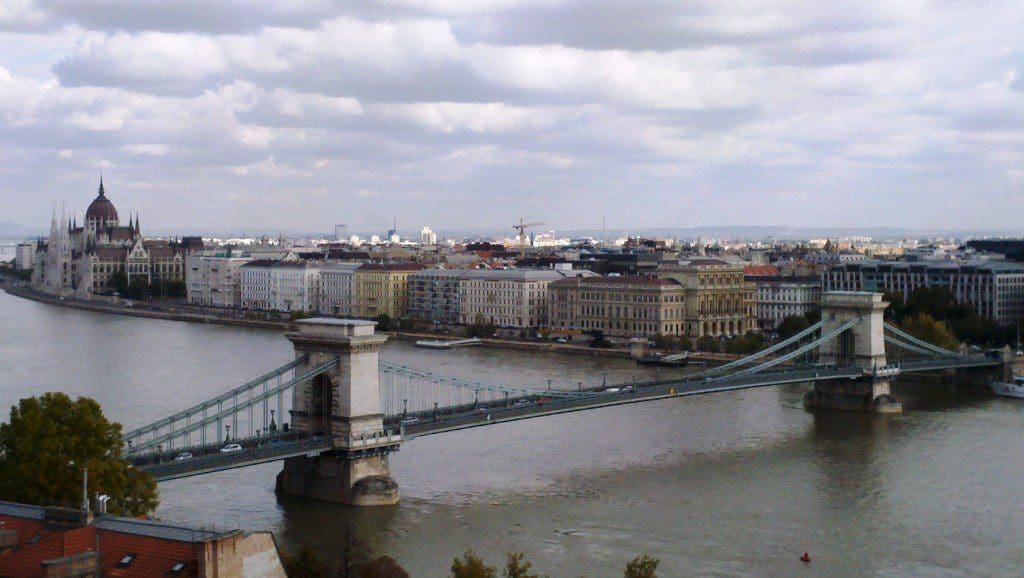
Located right in the middle of Central Europe, Budapest is the lively and enchanting capital of Hungary. The city straddles the Danube River and is the union of the original towns of Buda, Obuda and Pest. In an earlier post, I talked about the Best of Buda and in this second installment I’ll share the sights and attractions of the Pest side.
Pest lies on the left bank of the Danube, across from the hills of Buda. Seven lovely bridges span the river, connecting the two sides, with the stately Chain Bridge being the oldest. A walk across the Chain Bridge, particularly at night, is a must for visitors. The Danube promenade, or Duna korzó, stretching along the riverfront is another romantic stroll lined with park benches and cafes where you can enjoy stunning views of Castle Hill directly across the river. The downtown area is filled with businesses and retail shops, restaurants and bars. The pedestrian shopping street Váci utca is lined with storefronts of many high-end boutiques. Indeed, Pest is very walkable, although it does cover a large area so the three metro lines and city trolleys are economical and reliable ways to cover the longer distances. Travel Maestro tip: Purchase the inexpensive 2-day Hop On/Hop Off bus pass that runs a circuitous route to the principal attractions and even includes a Danube boat ride.
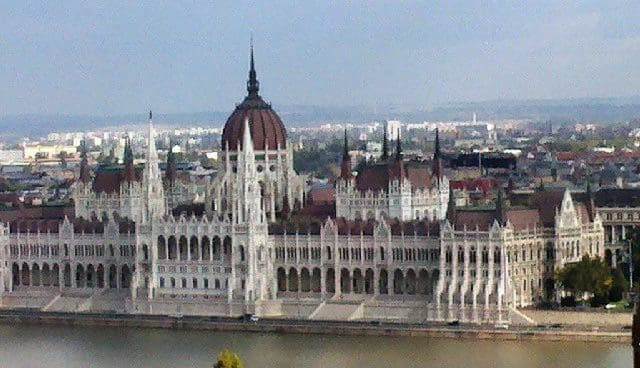
Everywhere you look, the architecture is simply magnificent. The elegant stone buildings are massive, some freshly cleaned, others wearing their age like a tattered coat, but there is breathtaking Old World grandeur turn after turn. Parliament is a monumental neo-Gothic complex of 691 rooms and 10 courtyards overlooking the river. The building is not open to the public at all times, but scheduled daily tours are available to see the gold staircases and the crown jewels dating to the 12th century. Travel Maestro tip: Reservations are recommended.
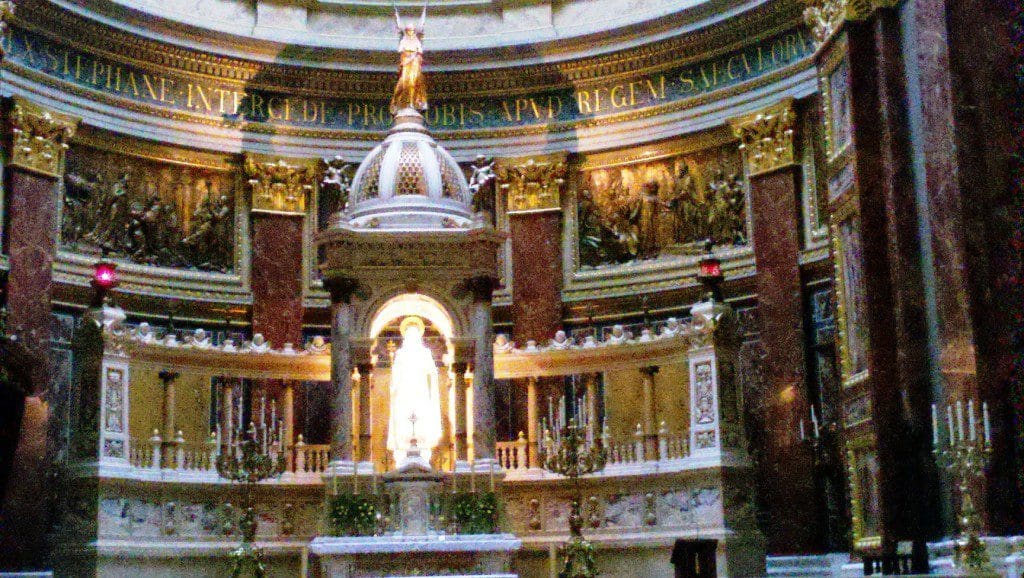
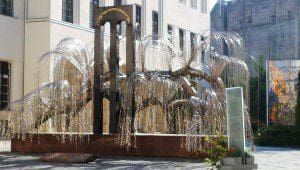
There are many beautiful churches to be visited. St. Stephen’s Basilica, with its 300-foot high gold dome rising above the skyline, is handsomely decorated with 150 different kinds of Hungarian marble. It houses the mummified hand of King Stephen I, Hungary’s patron saint. The Great Synagogue is the second largest in Europe. Defiled by Nazis, it was rebuilt with donations from all over the world and has a lovely metal weeping willow tree sculpture in the courtyard as a memorial to Holocaust victims.
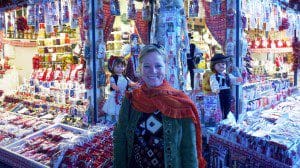
The huge Central Market Hall is a must see, both for the impressive iron-frame building and the abundance of food, folk embroidery and souvenirs available for sale within. The ground floor with stalls of salami, paprika and fruit is frequented by locals and tourist alike, while the upper floor has hundreds of stalls selling intricatedly carved wooden boxes, colorful handmade linens and costumed dolls.
While we are talking about food, let me just say that the Hungarian cuisine is just delectable. Two words: comfort food! The ubiquitous goulash (tender beef and potato stew in paprika herbed tomato broth) is a delicious staple of the flourishing cafes and restaurants. Pork, goose liver, duck, chicken and fish are other favorites that are often flavored with paprika, and doughy dumplings are served with everything.
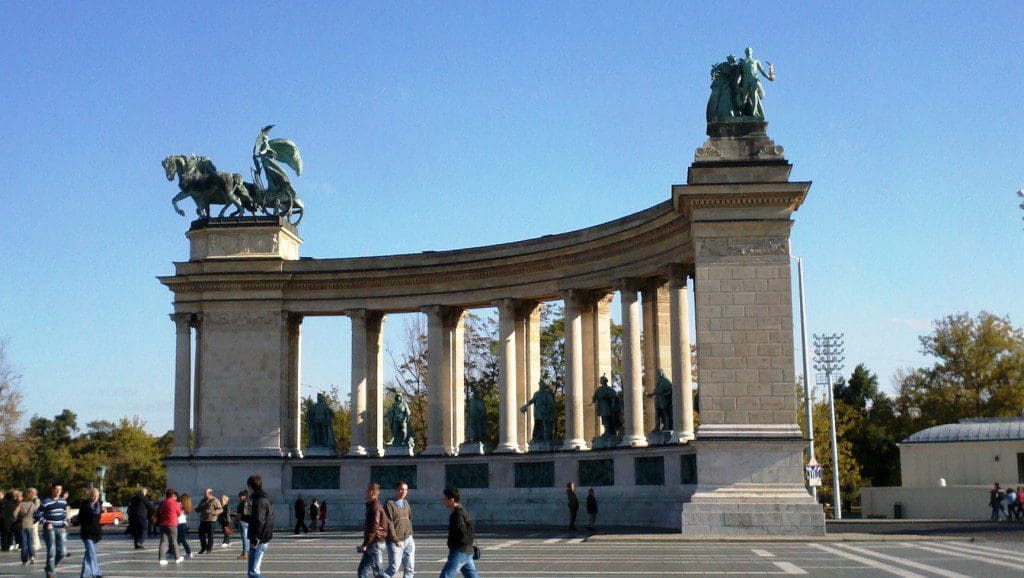
Still more sights to see include Hero’s Square, honoring Hungary’s kings and leaders, the gorgeous Hungarian State Opera House, the huge City Hall with its allegorical statuary, the extensive collections of the Hungarian National Museum and numerous other interesting museums and splendid buildings. Be sure to treat yourself to a traditional folklore show or one of the many symphonic concerts that perform frequently.
This is an energetic and enthralling city that needs a minimum of three days to see only the highlights, but warrants a week if you want to really explore all of the museums and culture available. Covington vacation advisors are ready to help you plan your visit to Budapest. I’m sure you’ll find it to be as charming as I did!






Leave a Reply